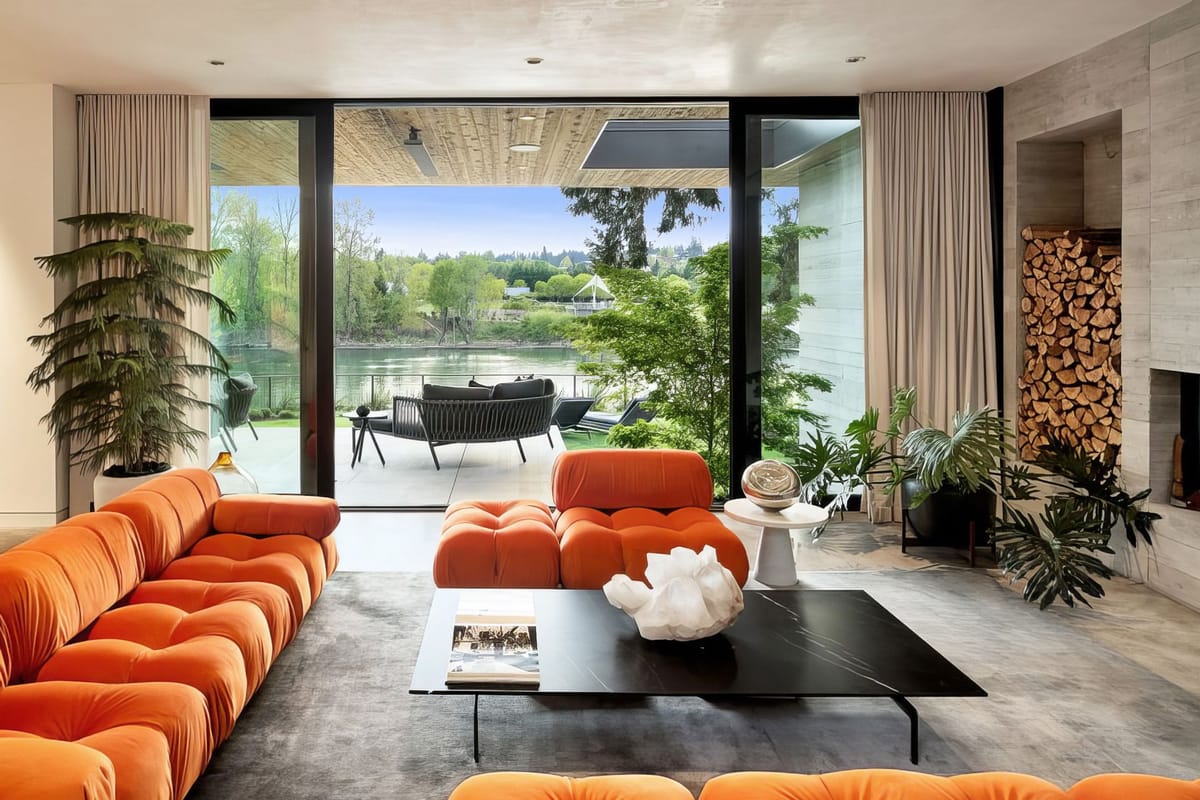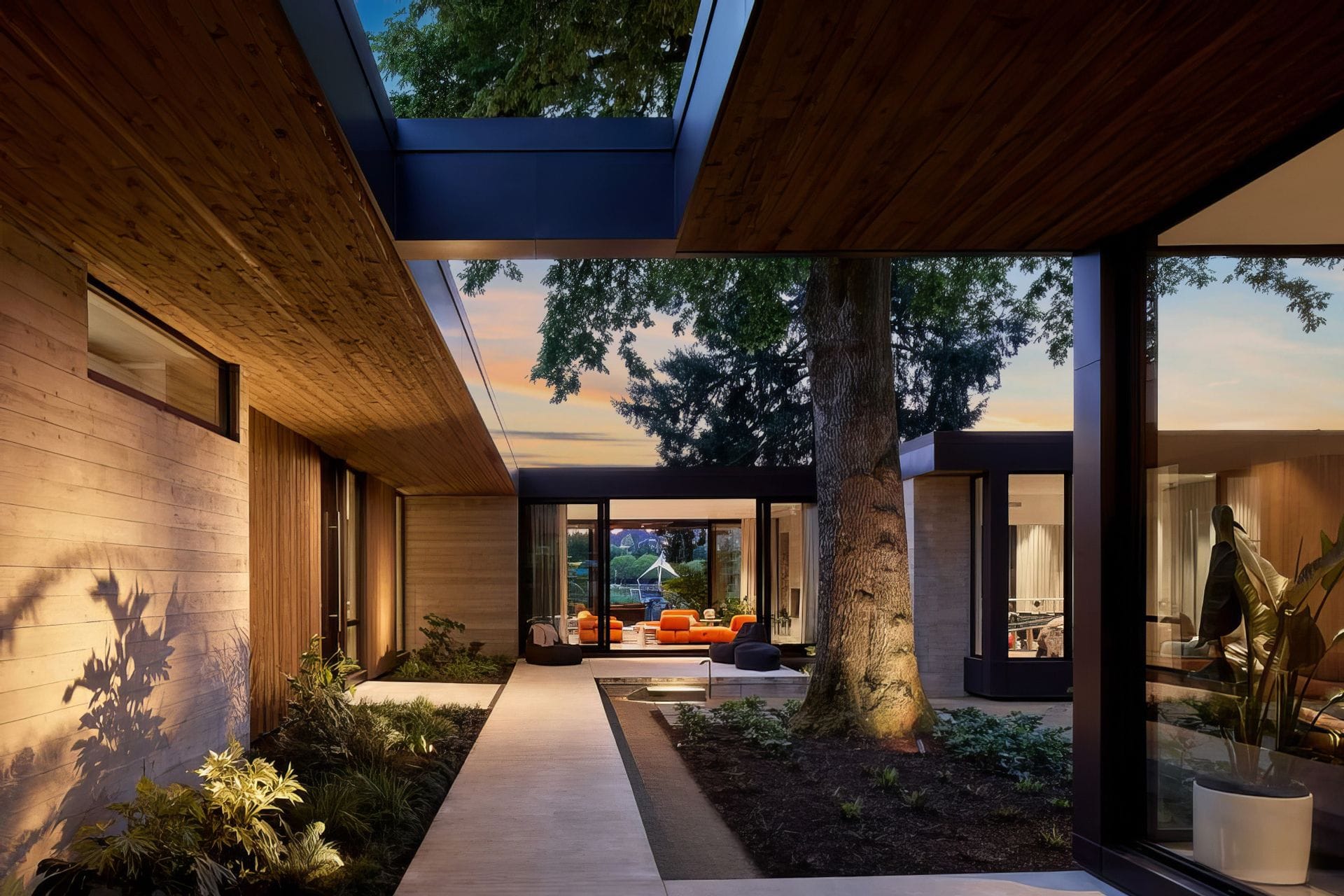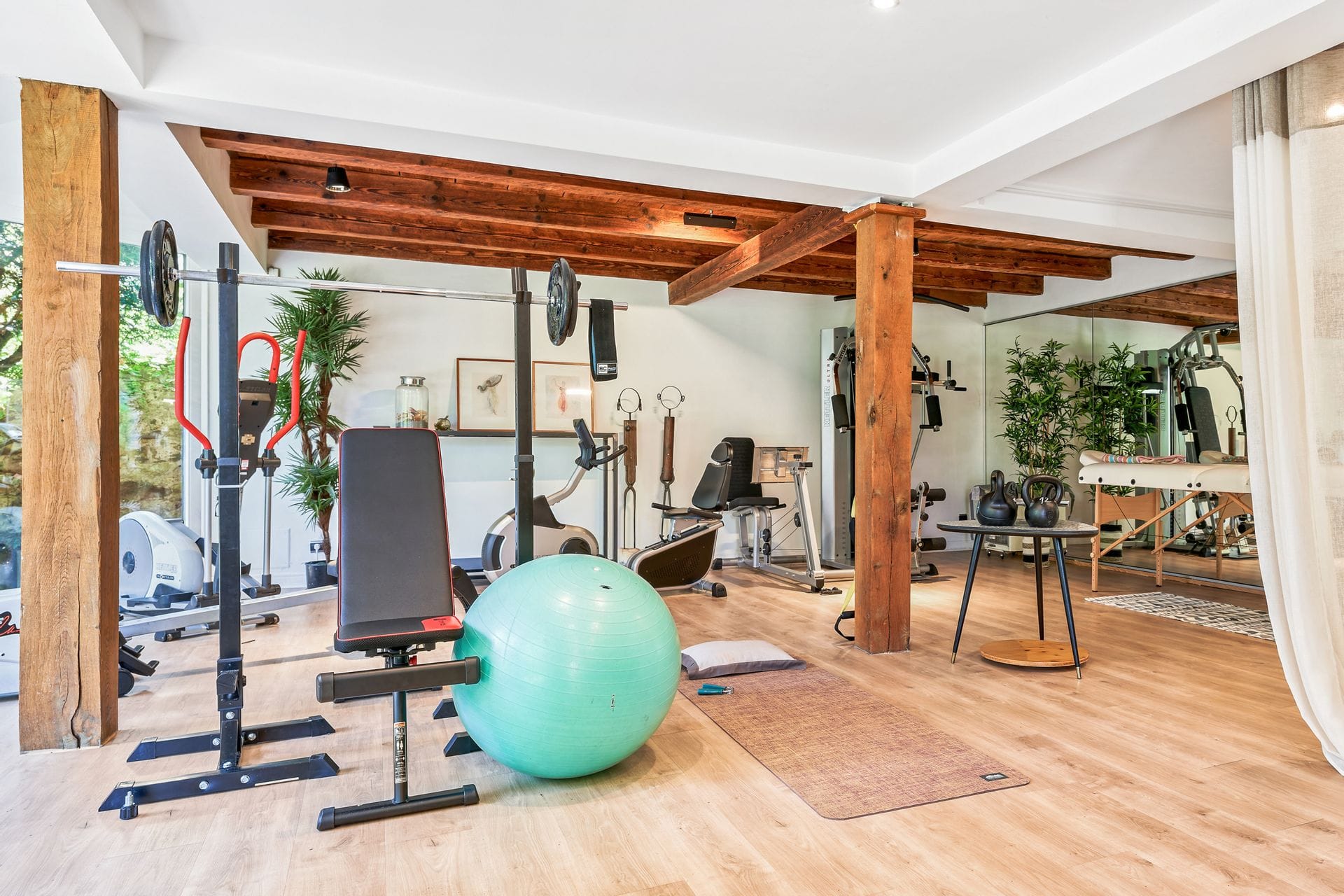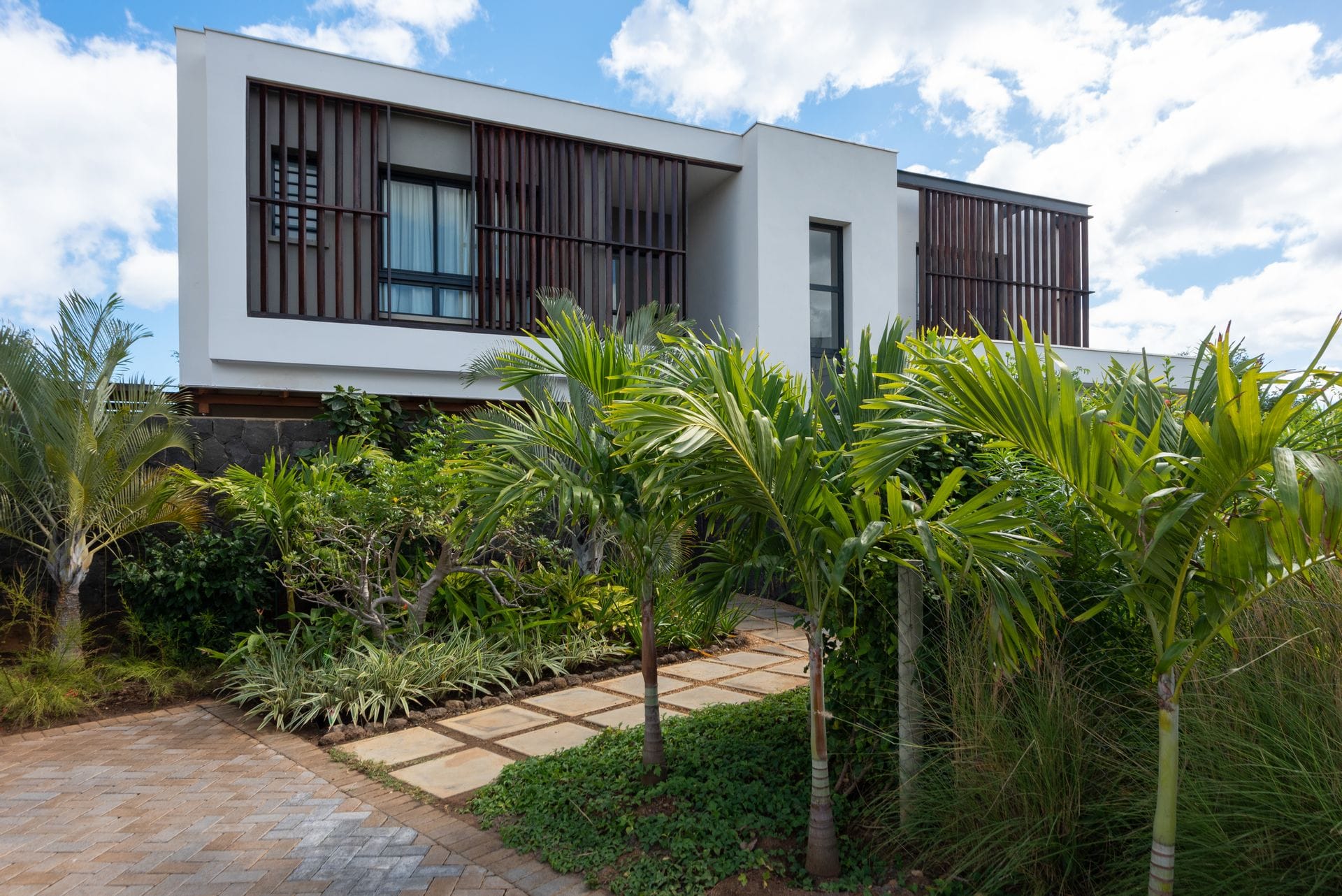Luxury Wellness Home Ideas: How to Create a Peaceful Retreat in Your Second Home
What if your second home could heal you? Discover how to turn it into a luxurious wellness retreat that soothes body, mind, and soul — with biophilic design, smart tech, and spaces made for serenity.

The concept of home has evolved beyond mere shelter; it's now where we seek refuge from the pressures of everyday life. For those fortunate enough to own a second property, transforming this space into a wellness retreat presents a rare opportunity to craft a personal sanctuary dedicated to rejuvenation.
Learning how to design such a space thoughtfully has grown increasingly valuable as wellness, luxury, and interior design continue to merge in fascinating ways.
This knowledge speaks directly to luxury homeowners who see their properties not just as investments but as extensions of their lifestyle philosophy.
In this post, we'll look at practical strategies for turning your second home into a luxury wellness retreat.
Create a biophilic foundation

Bringing nature into your home's design isn't just beautiful; research shows it measurably reduces stress and sharpens thinking. Biophilic design taps into our deep connection to the natural world through smart architecture and interior choices.
You might be curating your second home as a personal retreat or envisioning occasional hosting opportunities. But either way, these biophilic touches add lasting value.
Within curated home exchange networks like HomeExchange Collection, properties that emphasize natural light, organic materials, and greenery tend to attract like-minded guests seeking peaceful, wellness-centered environments.
These authentic connections to nature create an immediate sense of welcome for guests, making your home highly desirable in the luxury exchange community.
To build a strong biophilic foundation, focus on these three core strategies that integrate nature into your everyday living environment:
- Let in ample natural light: Arrange furniture to capitalize on existing windows and think about enlarging window openings where structurally possible. Add skylights in areas lacking sufficient natural light, like interior bathrooms or hallways. Choose window treatments that filter rather than block sunlight, perhaps automated shades that adjust throughout the day to balance natural light with privacy and temperature control.
- Bring living elements inside: Look beyond typical houseplants by creating a living wall as a striking focal point that doubles as a natural air purifier. For second homes that sit empty periodically, install self-watering systems or choose preserved moss walls that need no care yet offer similar biophilic benefits. Small herb gardens near kitchen windows add both greenery and fresh ingredients when you're in residence.
- Choose natural materials with purpose: Mix textures like rough stone, hand-scraped wood flooring, and raw silk fabrics to build a rich sensory environment. Select materials with minimal processing that keep their natural characteristics and develop beautiful patinas. Consider incorporating reclaimed wood beams, limestone countertops, or marble shower surrounds that showcase natural veining, where imperfections become points of beauty rather than flaws.
Design for mental clarity

Your home's layout and architecture profoundly affect cognitive function and emotional state. Smart design choices naturally promote mental clarity and inner calm. To create a more mentally soothing environment, focus on the following:
Set aside meditation spaces
Reserve a specific area, perhaps a corner with beautiful views or a quiet nook, exclusively for meditation and mindfulness. Keep this space free from screens and household distractions. Think about adding sound-absorbing panels disguised as art pieces to create a tranquil zone. Install lighting that dims to support different meditation practices at various times of day.
Create smooth spatial flow
Look at how movement happens throughout your house and fix awkward transitions that create subtle tension. Make clear visual breaks between functional zones while maintaining consistency through repeating design elements. Where possible, widen doorways to create an airy, accessible feel.
Embrace purposeful simplicity
Choose belongings carefully, making sure each item in your second home either serves a practical purpose or brings genuine beauty. Build storage solutions that keep necessities accessible but out of sight to maintain clean visual lines. Remember that simplicity doesn't mean coldness.
Include carefully selected pieces with personal meaning or that spark happy memories rather than generic decorative objects.
Enhance physical well-being

Your second home can easily include features supporting physical health without sacrificing luxury or aesthetics. Here are some ways you can enhance your physical wellness:
- Design versatile movement space: Rather than dedicating one room solely to exercise equipment, create a flexible space that adapts to different activities, such as yoga, strength training, dance, or stretching. Place mirrors strategically to check form during workouts while visually expanding the room.
- Add recovery elements: Incorporate recovery into your daily rhythm with features like contrast therapy setups offering hot and cold treatments. Discreetly stored massage tools or a designated area for guided stretching can bring subtle luxury. As a member of HomeExchange Collection, you also enjoy exclusive perks like Soothe, a premium service that delivers licensed massage therapists to your door (only available in the US).
- Create ideal sleep environments: Invest in blackout solutions that fully eliminate light pollution and lighting that adjusts throughout the day to support natural sleep cycles.
Cultivate sensory harmony

A truly luxurious wellness retreat engages all senses cohesively, creating an immersive experience of tranquility. Consider the following:
- Create a balanced sound experience: Install whole-home audio with zoning that allows different soundscapes in various areas. Add acoustic treatments that look like design elements to improve sound quality in key spaces. For properties in noisy locations, explore architectural fixes like triple-paned windows or specialized insulation to create genuine quiet.
- Create layered scent experiences: Move beyond candles with built-in home scenting systems programmable for different zones and times. Work with a scent designer to develop custom fragrances that evoke specific emotions or memories tied to your retreat space. Think about how the natural materials in your home contribute their own subtle scents to the overall experience.
- Balance visual elements: Develop a color strategy based on biophilic principles, using nature-inspired palettes that encourage specific psychological states. Notice how natural and artificial light interact with your color choices throughout the day. Choose art thoughtfully, selecting pieces that inspire contemplation rather than stimulation or distraction.
Integrate wellness technology

Today's innovations can significantly enhance a wellness-focused home without creating the digital clutter that often adds stress. Here is how:
- Add water purification systems: Install whole-home filtration addressing both drinking water and shower/bath water quality. Look into structured water systems designed to improve hydration and cellular function. For properties with challenging water supplies, explore comprehensive solutions targeting minerals, chemicals, and microplastics.
- Improve air quality: Go beyond standard air purifiers with built-in systems that monitor and address CO2 levels, VOCs, particulate matter, and humidity. Look at advanced HVAC filters and UV sanitization that integrate with existing systems. Add technology that brings in controlled amounts of fresh air for homes in variable climates while maintaining energy efficiency.
- Add circadian-friendly lighting: Install lighting that automatically adjusts throughout the day to support natural biological rhythms. Consider window treatments that respond to natural light patterns, optimizing energy efficiency and health. Look for specialized fixtures for specific wellness activities, such as meditation lighting that mimics sunrise or sunset hues.
These technological enhancements elevate your wellness experience and create a significant advantage when listing your property on home swap communities, such as HomeExchange Collection. Discerning exchange partners increasingly seek homes with these advanced features, viewing them as essential components of a truly luxurious experience rather than mere amenities.
Create social wellness spaces
Wellness isn't just personal; spaces that encourage meaningful connection are key to a complete approach. The following ideas can help shape social spaces that feel both welcoming and intentional:
- Design conversation-friendly arrangements: Create seating that naturally encourages eye contact and comfortable conversation rather than pointing all furniture toward TVs or screens. When designing social spaces, pay attention to acoustic properties, ensuring voices carry clearly without echoing or straining. Include various seating options that work for different types of gatherings.
- Plan for shared wellness activities: Design kitchens that make collaborative cooking enjoyable as a social wellness activity, with multiple work zones and comfortable spots for conversation. Create outdoor spaces specifically for group wellness activities like yoga or meditation. For properties that host extended family or friends, balance communal experiences with opportunities for privacy and quiet renewal.
- Balance privacy and connection: Design buffer zones between the house's highly social and intensely private areas to allow for psychological decompression. Consider how sound travels between spaces and add architectural elements for acoustic privacy without creating isolation. Maintain sightlines between spaces while still defining separate functional areas.
For HomeExchange Collection members, these social spaces create natural gathering points where you can connect with exchange partners during overlapping stays (arrangements where you exchange only a guest room or part of your home while remaining on-site as a host).
Many Collection members report that thoughtfully designed social areas lead to more satisfying exchanges that foster cultural immersion and even lasting friendships. The kitchen especially becomes a focal point for cultural exchange, an experience you can enhance with exclusive member access to The Chef & The Dish, offering private cooking classes with renowned chefs worldwide.
Make sustainable luxury as a wellness foundation
True wellness extends beyond personal benefits to consider environmental impact. Here are a few ways to align eco-conscious choices with comfort and style:
- Add earth-friendly systems: Explore geothermal heating and cooling options that reduce environmental impact while providing superior comfort. Look into solar installations designed to blend harmoniously with luxury architecture rather than appearing tacked-on. Add water recycling systems for landscape irrigation that reduce consumption while maintaining lush surroundings.
- Select sustainable luxury materials: Source naturally sustainable materials like rapidly renewable bamboo in high-end finishes. Explore innovative surfacing materials made from recycled content but finished to luxury standards. Work with artisans using traditional, sustainable practices to create custom elements for your home.
- Design for long-term value: Choose timeless design elements rather than trend-driven features that will need frequent updating. Invest in quality construction and materials that age beautifully and require minimal replacement. Think about how spaces might adapt to changing needs over time without major renovations.
Takeaway: Wellness-focused home is the new luxury
Creating a wellness-focused second home represents one of the most meaningful investments possible in your health, happiness, and quality of life. You transform a simple property into a sanctuary that continuously nurtures your well-being by thoughtfully incorporating biophilic elements, sensory harmony, and wellness technologies.
For periods when you can't be present to enjoy your wellness retreat, HomeExchange Collection offers an unparalleled solution. This exclusive network connects you with verified luxury homeowners who share your appreciation for exceptional spaces and wellness-focused living. Beyond the practical benefit of having your property occupied and cared for by respectful guests, membership unlocks a world of extraordinary wellness experiences in other luxury homes globally.
The Collection difference extends beyond the exchange itself through exclusive partnerships with premium wellness and lifestyle brands. Members enjoy special access to Context Travel's expert-led cultural tours in 60 cities worldwide, in-home spa treatments from Soothe, and immersive artistic experiences with VAWAA (Vacation With An Artist).
Visit HomeExchange Collection to discover how our premium home exchange platform can complement your luxury wellness lifestyle. It provides access to extraordinary homes worldwide while ensuring your own property receives the care and appreciation it deserves when you're away.
FAQs
Here are some frequently asked questions regarding wellness home ideas:
What is wellness in interior design?
Wellness interior design focuses on creating physical, mental, and emotional spaces that promote overall well-being. It considers how factors like lighting, air quality, materials, and spatial layout affect our daily health and mood. Unlike traditional design, which often prioritizes aesthetics, wellness design emphasizes how spaces feel and function for the people using them.
What is the biophilic design trend?
Biophilic design is a growing trend that incorporates natural elements into built environments to improve well-being. It’s based on the idea that humans thrive when connected to nature, even in indoor settings. From living plants to natural textures and light, this approach has been shown to reduce stress and improve mental clarity.
What are the elements of biophilic design?
Biophilic design includes both direct and indirect connections to nature, as well as thoughtful spatial layouts. It’s not just about adding plants, it's about integrating natural forms, materials, and light into the overall environment. The goal is to create spaces that feel alive, engaging, and deeply connected to the natural world.
What are the 5 sensory experiences involved in biophilic design?
Biophilic design engages all five senses to create fully immersive natural connections:
- Sight: Natural light, greenery, organic shapes
- Touch: Textured surfaces, airflow, temperature changes
- Hearing: Water sounds, nature-inspired acoustics
- Smell: Plant aromas, earthy natural scents
- Taste: Herb gardens, edible landscaping
What are the 3 components of biophilic design?
According to Stephen Kellert's framework, biophilic design contains three essential elements:
- Direct nature: Light, plants, water, fresh air
- Indirect nature: Natural materials, imagery, color schemes
- Space experience: Refuge areas, open views, transitions
What are the 5 natural elements often used in design?
The five fundamental natural elements frequently incorporated in design include:
- Water: Visual and auditory calm
- Fire: Warmth and ambiance via flames or lighting
- Earth: Stone, clay, grounding textures
- Wood: Natural warmth and pattern
- Metal: Structural strength and reflectivity




